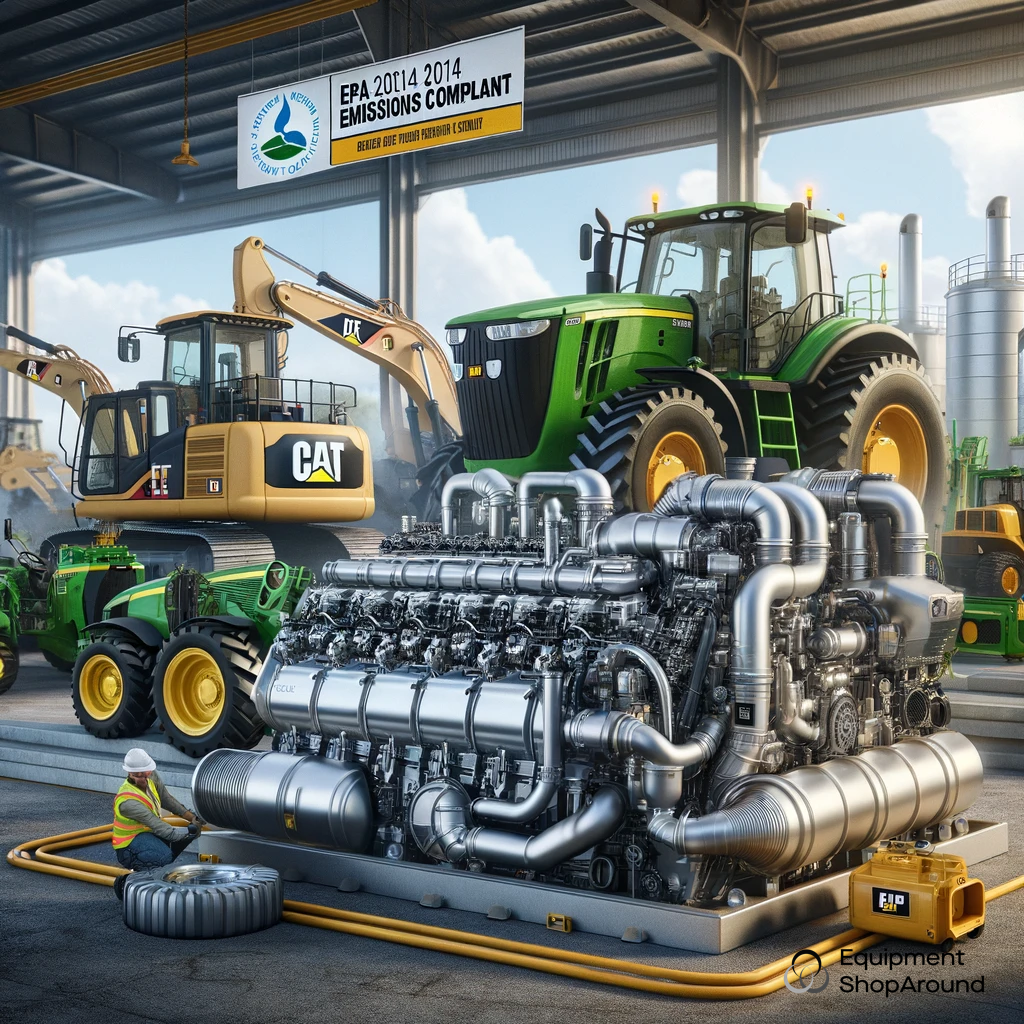
In 2014, the U.S. Environmental Protection Agency (EPA) implemented stringent emissions standards aimed at reducing harmful pollutants from non-road diesel engines. These regulations, often referred to as EPA Tier 4 standards, have had significant implications for the import, sale, and operation of construction and agricultural equipment across North, Central, and South America. Understanding these rules is crucial for businesses and individuals looking to buy, sell, or import heavy machinery.
What Are the EPA 2014 Emissions Standards?
The EPA’s 2014 emissions standards, part of the Tier 4 regulations, were designed to significantly reduce nitrogen oxides (NOx) and particulate matter (PM) emitted by diesel engines. These standards required manufacturers to integrate advanced emission control technologies such as:
- Diesel Particulate Filters (DPF) – Captures and burns soot to reduce particulate emissions.
- Selective Catalytic Reduction (SCR) – Uses diesel exhaust fluid (DEF) to break down NOx into harmless nitrogen and water.
- Exhaust Gas Recirculation (EGR) – Reduces NOx emissions by recirculating part of the exhaust back into the engine.
By enforcing these measures, the EPA aimed to improve air quality and reduce the environmental footprint of heavy machinery.
How Do These Standards Affect Equipment Imports?
The impact of the 2014 EPA emissions standards extends beyond the United States, influencing markets across the Americas. Here’s how these regulations affect equipment movement across borders:
North America
- Canada: Canada closely aligns its emissions regulations with the EPA, requiring that imported machinery meet equivalent standards.
- Mexico: While Mexico does not have identical Tier 4 standards, emissions compliance is becoming a growing concern for machinery imports, especially for newer fleet operations and projects funded by international organizations.
Central and South America
- Many countries in Latin America do not strictly enforce Tier 4 standards but do impose varying levels of emissions controls.
- Countries such as Brazil, Chile, and Colombia are progressively adopting stricter emissions laws that align with European and U.S. norms.
- Some governments impose restrictions or additional import taxes on non-compliant equipment, making Tier 4-compliant machines more attractive.
For businesses looking to export used U.S. machinery to Latin America, understanding whether a machine can be legally imported or if it requires modifications is critical.
How to Identify If a Machine is Tier 4 Compliant?
Buyers and sellers must verify emissions compliance before purchasing or importing heavy machinery. Here’s how to identify if a machine meets the 2014 EPA standards:
- Check the EPA Label – Compliant machines will have an EPA emissions label located on the engine. This label typically states the emissions tier and confirms that the engine meets Tier 4 regulations.
- Review the Engine Model – Manufacturers such as Caterpillar, John Deere, and Kubota clearly indicate Tier 4 compliance in their engine model specifications.
- Inspect the Exhaust System – Machines equipped with SCR, DPF, or EGR systems are likely compliant with Tier 4.
- Request Documentation – Sellers should provide official compliance documents or certificates showing that the equipment meets EPA standards.
Final Thoughts
Understanding EPA 2014 emissions standards is essential for those involved in the construction and agricultural machinery industries, particularly when dealing with international trade. While North America maintains strict enforcement, other regions in Central and South America are gradually aligning their regulations to improve environmental quality. Buyers and sellers should verify compliance through engine labels, manufacturer specifications, and emissions control systems before importing or exporting equipment.
By staying informed about emissions regulations, businesses can avoid legal issues, reduce environmental impact, and make strategic equipment investments that align with global standards.

Leave a Reply